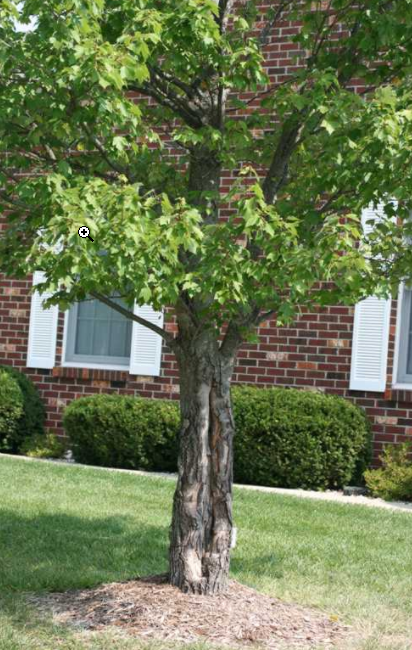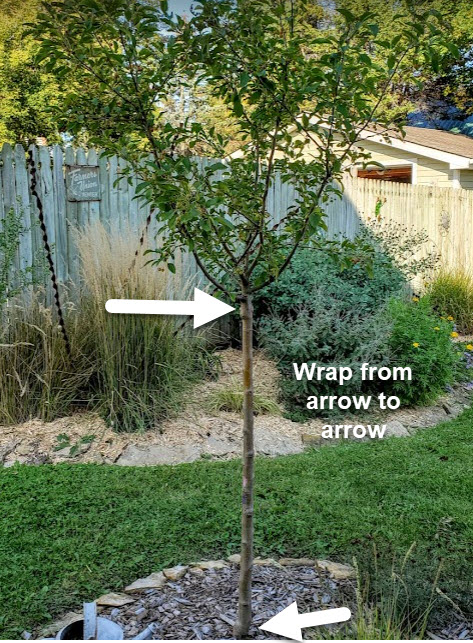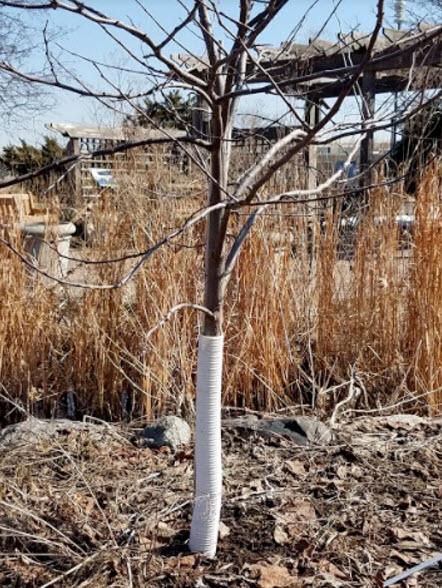Click below to listen to my 2 min. Garden Bite radio show: Protecting your woodies
Audio PlayerIt’s not too early to start thinking about winter protection for your woodies! Before you get the wrong idea… I’m talking about your trees and shrubs!

Woody plants are plants that have hard stems (thus the term, “woody“) and that have buds that survive above ground in winter. The best-known examples are trees and shrubs (bushes). These are commonly broken down further into the deciduous and evergreen categories. The opposite of “woody plants” is “herbaceous” plants
Winter sun, wind, temperature fluctuations, snow and ice can make for a deadly combo for your trees and shrubs. Sunscald happens on bright winter days when the sun heats up the cambium layer on the south and/or west side of your trees. The cambium layer moves water and nutrients through the tree, if it heats up, it starts to move and then freezes when the sun goes down and can kill your tree. You’ll see dead bark that looks sunken, cracked or dried. Great information can be found at Missouri Botanical Garden.

Apply light colored tree wraps or guards now on newly planted trees, meaning within the last few years and thin-barked trees such as cherries, crabapples, plums, some maples and honey locust. Wrap them from the soil to the first set of branches.


Water your trees up until the ground freezes but don’t flood them. The average date for ground freeze for zone 4 is December 6th, however, with changing weather patterns, rely more on your own County Extension office or Soil & Water Conservation District for dependable information.
Moist soil holds more warmth than dry soil. UNWRAP your trees in Spring after the last frost.
Tomorrow I’ll talk about evergreens and winter burn.
